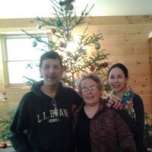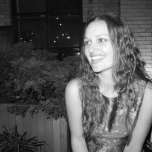Home > All Classes > Knitting > AccessoriesDouble Knitting Workshop
Intermediate
|
1 hour

Taught by Edie Eckman
In this easy-to-follow class, master knitter Edie Eckman provides you with all the skills you need to start double knitting. Since you are literally knitting both sides of fabric at the same time, this fun technique keeps you on your toes. Double knit fabric is reversible and cushy, with a design that looks different on each side. Edie demonstrates the basics to get you started, including options for holding the needles for both continental and English style knitters. She also shows you how to follow charts, building up reversible patterns in double-faced Stockinette stitch. Once you’ve got the hang of it, use the ideas presented here to make cute coasters, cowls, or a double-knit scarf (pattern and charts included in PDF).
What You’ll Get:
Learn how to:
- Cast-on with long tail and cast-on invisible tubular methods
- Double knit, moving yarn and needles
- Twist yarn at ends of rows to create edges
- Work condensed bind-off and grafting (Kitchener stitch) bind-off
- Trouble shoot mistakes
- Follow charts to create patterns
What You’ll Get:
- Detailed instructions on how to work double knitting
- 6 video lessons you can access online, anytime
- Detailed supplies list and downloadable PDFs with patterns and charts
- Step-by-step expert instruction from Edie Eckman
- The ability to leave comments, ask questions, and interact with other students

Chapters
|
01:14
|
|
01:06
|
|
10:43
|
|
07:45
|
|
29:58
|
|
15:56
|
Materials
Here’s what you’ll need:
- 2 skeins lightweight worsted weight yarn in contrasting colors, if making scarf; Edie uses Skacel HiKoo Sueño [80% superwash merino wool/20% viscose, 3.5 oz/100 g, 255 yd/233 m], 1 skein each of 2 colors.
- Colors shown are: A: 1102 Caramel and B: 1142 Robin's Egg
- US size 8 [5 mm] knitting needles, or size to obtain correct gauge
- US size 6 [4 mm] knitting needles (for cast-on)
- Scissors
- Tapestry needle
- Crochet hook
- Pattern PDF




Member Gallery
Browse members' projects from this class, add them to your Favorites, and share your own work!
Load More
Discussion
Notes
Your timecode tags and notes for this section
Transcript
Who's Recently Taken This Class
Meet other crafters who have recently taken this class.
Nancy Brunkal
Amy White

Jane Hogan

Jenn McGlon

Krityum Sisters

Leanne Rodriguez

Cori Laraway
Mary Jo Sadre Orafai
Mari Johnson

Florence Manglani

Anderea Vaughan

Liana Allday
Jan Taylor
Maria L Fernandez
gillian hasler

Eveline St. Denis
Anthony Henderson
carufigue
Lani Smith
Nina Huynh






















